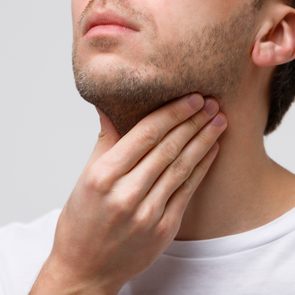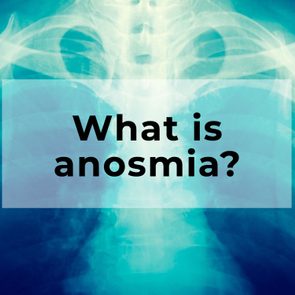These People Are Most at Risk For Gallstones

In 75 per cent of cases, gallstones don't cause any symptoms. However, if a troublesome case is left untreated, they can lead to serious health problems.
For a small, inessential body part, the gallbladder can cause a lot of pain. Roughly the shape and size of a pear, the organ sits in the right side of your abdomen. Its job is storing bile, a liquid produced by the liver that helps you digest the fats in your diet. The gallbladder releases the liquid as needed into the small intestine. (Here are more body parts you never knew you had.)
What causes gallstones?
When bile’s delicate chemical balance gets thrown off—we don’t fully know how or why—its components can crystallize. Over years, these crystals can combine to form gallstones (medical term: cholelithiasis), which can be as tiny as grains of sand or as large as golf balls. In at least 75 per cent of cases, gallstones don’t cause symptoms or complications and therefore don’t require treatment.
What do gallstones feel like?
However, should a stone temporarily block one of the bile ducts leading in and out of the gallbladder, the result is a sudden, short-lived bout of gripping or gnawing pain in the abdomen, rib cage area or shoulder. This won’t cause lasting damage, but you might like to visit a doctor to confirm that it is indeed gallstones and not another problem, such as an ulcer. (Here are more ulcer symptoms to watch out for.)
Longer-term or permanent duct blockage can lead to serious complications, like infections and inflammation. Therefore, you should see a doctor immediately if you experience symptoms that include jaundice, fever, chills or incessant pain.
Who is most at risk for gallstones?
Gallstones have a greater chance of developing in women, adults over the age of 40 and people with a family history of the condition. Beyond that, the major correctable risk factor is obesity, says Dr. Stephen Ryder, medical adviser to the British Liver Trust. But Ryder cautions against shedding weight quickly: “Rapid weight loss or gain can cause stones to form and can trigger symptoms, so controlled weight loss is best.”
How are gallstones treated?
If you already suffer from symptomatic gallstones and the attacks are mild, you could manage their effects with painkillers; a low-fat diet may also make a modest difference. If your symptoms are severe and frequent, the only effective treatment is the surgical removal of the gallbladder.
You can live without the organ: your liver will still produce bile, which will drip directly into the small intestine rather than collecting in the gallbladder first. Post-surgery, approximately one in 10 patients experience occasional diarrhea as their digestive systems adapt to the continuous release of bile. The diarrhea might last anywhere from weeks to years, but medications called bile acid binders can help control this unpleasant side effect. For most people, though, the difference between having a gallbladder and not having one is unnoticeable.
Now that you know what causes gallstones, find out 20 symptoms you should never ignore.






